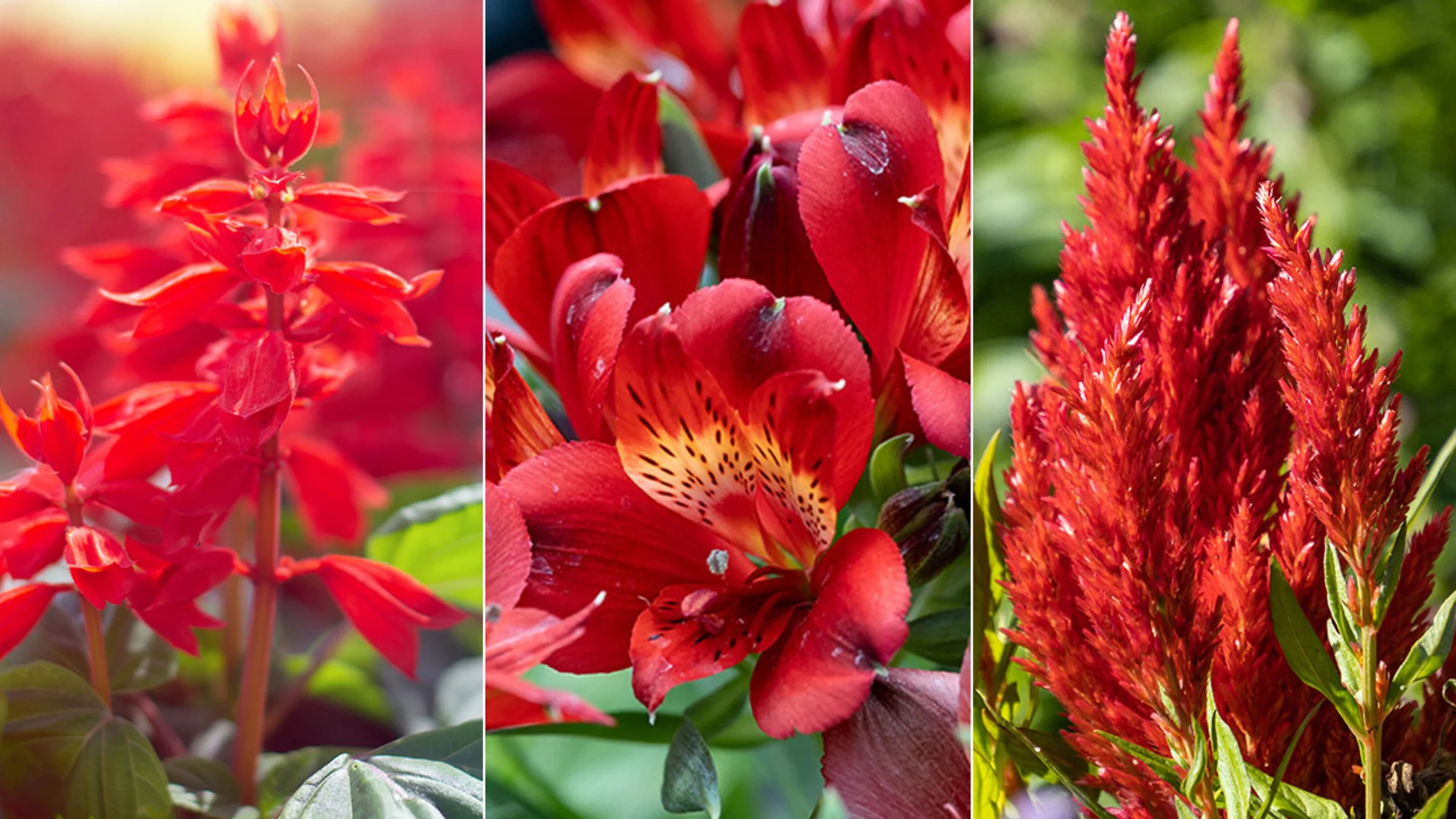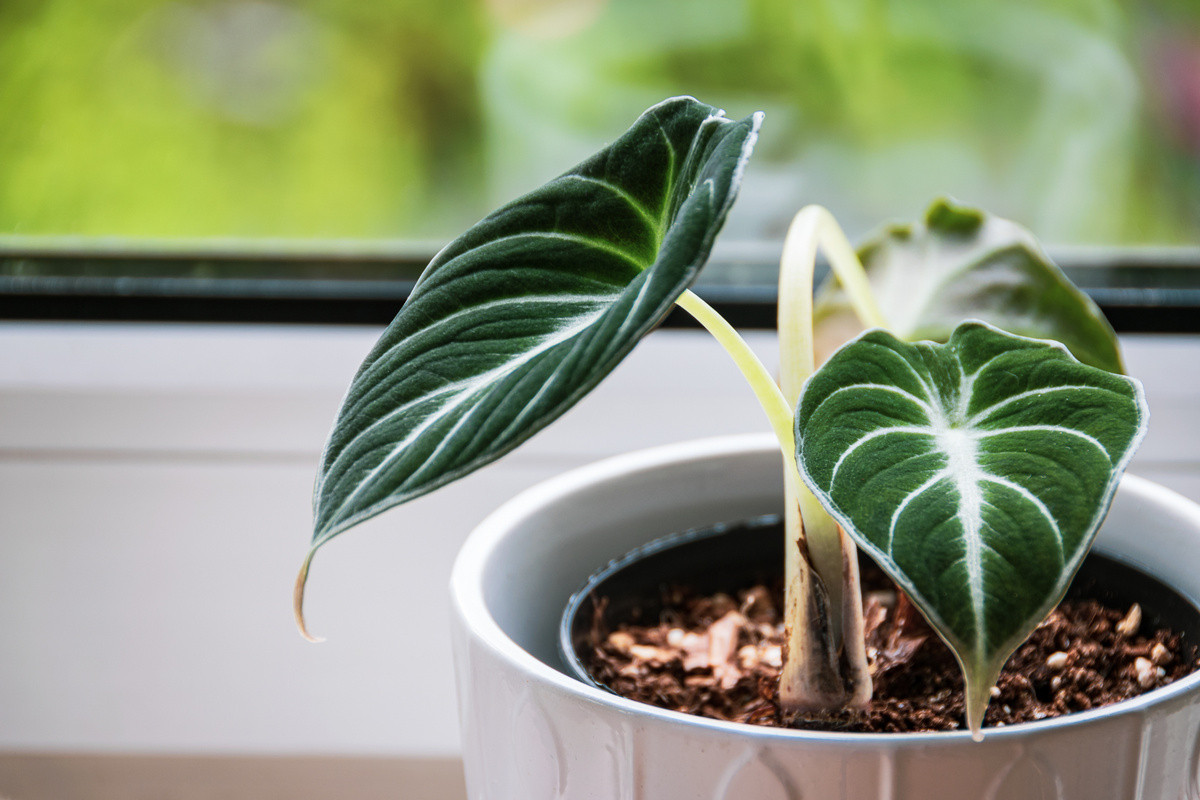Red plants have long captivated gardeners and plant enthusiasts with their striking, vibrant hues. In many cultures, the color red is associated with love, passion, and prosperity, making red foliage and blooms an exciting choice for those looking to add a bold statement to their outdoor spaces. Whether you’re creating a themed flower bed or simply want a pop of color, incorporating a variety of red plants into your garden can instantly elevate its visual appeal.
In this article, we’ll explore what makes red plants so unique, some popular red plant names you might want to consider, the secret methods for growing and maintaining them, as well as garden design ideas that will help you create a truly one-of-a-kind space. Along the way, we’ll delve into tips from Gardenloom—your go-to resource for gardening wisdom. By the end, you’ll be ready to create a garden filled with the fiery vibrancy of red plants and enjoy a lush, thriving environment all year round.
The Power of Red in Your Garden
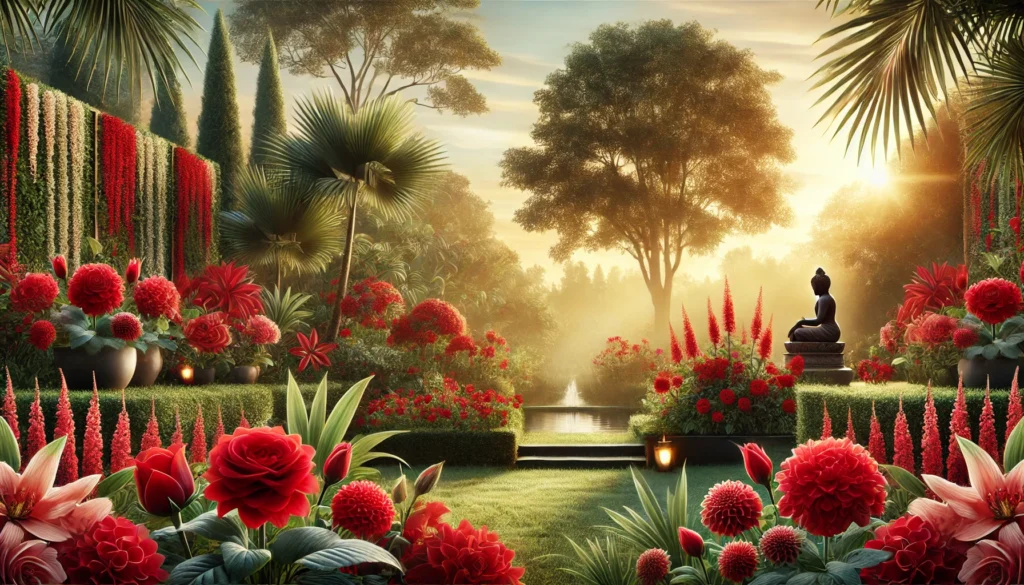
Table of Contents
When you think of a garden bursting with colors, what stands out in your mind? Perhaps you envision a rainbow of blooms, or maybe you dream of a space dominated by calming greens and blues. Red, in particular, is a color that commands attention, stimulating emotions and bringing a sense of excitement to any landscape. From bright crimson flowers that attract pollinators to deep burgundy leaves that add an air of sophistication, red plants offer a wide variety of options for gardeners who want to make a statement.
For centuries, red plants have been prized in ornamental gardens for more reasons than just their visual allure. Some cultures have associated red blooms with good luck or prosperity, while others have prized red foliage for its unique ability to stand out even among the lushest greenery. In a modern garden context, red plants are perfect for those looking to create focal points or highlight particular sections of their landscape. They can also serve as unifying elements in color-themed gardens or as complementary features in mixed borders.
Why Focus on Red Plants?
The idea of highlighting red plants in a garden is not new. Professional landscapers and botanical enthusiasts have studied for decades the impact of red blooms and foliage on overall garden design. Research shows that red hues can influence human behavior, eliciting feelings of warmth, energy, and excitement. As a result, red plants can make your garden an inviting space for guests, family, and local wildlife alike.
If you’re wondering how to set your garden apart from your neighbor’s, consider incorporating a carefully selected palette of red plants. In a sea of green lawns and pastel blooms, these fiery beauties will draw the eye and convey a sense of careful, thoughtful design. Moreover, red plants can serve many practical functions—some can attract beneficial insects and pollinators, while others can be surprisingly hardy in various climates.
By the time you finish reading this guide, you’ll know:
- What makes red plants so unique: We’ll discuss the science behind red pigmentation and how it influences a plant’s growth and appearance.
- Popular red plants names: We’ll provide a list of beloved red plant varieties and detail their primary features.
- Secret methods for growing and maintaining red plants: From soil preparation to pest control, you’ll discover effective strategies to keep your red plants thriving.
- Garden design ideas featuring red plants: Learn how to best integrate red plants into your garden, including companion planting tips.
- Additional garden tips from Gardenloom: Explore more resources, guides, and tools available from Gardenloom, ensuring your ongoing success as a gardener.
Ready to dive into the vibrant world of red plants? Let’s begin by exploring the scientific and aesthetic aspects that make these plants so extraordinary.
What Makes Red Plants So Unique?
The Science Behind the Color Red
The redness in plants often comes from pigments such as anthocyanins. These water-soluble pigments are responsible for a range of colors in the plant world, including red, purple, and blue. Variations in leaf pH levels can influence how these pigments manifest, creating an array of shades even within the same species. This is why some plants might appear as a vibrant, candy-apple red while others display deeper hues tinged with purple or maroon.
In flowers, red pigmentation can also be attributed to the presence of pigments like betacyanins, which belong to a different chemical group yet still yield red or magenta tones. The interplay of sunlight, temperature, and genetics can cause a single plant variety to show slight variations in color based on growing conditions. Understanding this is useful if you wish to tweak your garden conditions to enhance the vibrancy of your red plants.
Visual Impact and Emotional Resonance
The color red, often associated with intense emotions and warm energy, stands out strongly against the greenery typical in most gardens. This instant contrast catches the eye and creates focal points that can draw visitors along pathways or emphasize particular garden beds. By using red plants strategically, gardeners can structure their landscapes to naturally guide attention to specific areas, such as seating corners, water features, or entranceways.
Ecological Benefits
While it might not be the first thing that comes to mind, red plants can offer certain ecological benefits:
- Pollinator Attraction: Many red-flowering plants are known to attract hummingbirds, butterflies, and bees. Hummingbirds, for example, have a particular affinity for red blooms and rely on the nectar for sustenance.
- Shade Tolerance: Some red-leafed varieties have higher anthocyanin levels, which can help protect them in lower-light conditions. This can broaden your options if you have shady spots in your garden.
- Adaptability: Certain red plants are naturally hardy and resistant to common pests or diseases, making them a stable choice for gardeners who want both beauty and resilience.
By harnessing both the aesthetic and ecological advantages of red plants, you can create a garden that’s not only visually distinctive but also supports local wildlife and fosters biodiversity.
Popular Red Plants (Red Plants Names)
In this section, we’ll explore a few popular red plant varieties to spark your imagination. Each type offers its own distinct charm, whether you’re looking for dramatic foliage or eye-catching blooms. Remember to consider your local climate and soil conditions when deciding which plants to add to your garden.
Below, we highlight some beloved red plants without referencing any competitor businesses—just pure horticultural inspiration.
- Coleus (Solenostemon scutellarioides)
- Appearance: Known for its intricate, variegated foliage, which can range in color from bright red and pink to purple and green.
- Why It’s Great: Coleus thrives in partial shade and adds a burst of color to borders or containers. This plant is also relatively low-maintenance, making it perfect for both beginners and seasoned gardeners.
- Heuchera (Coral Bells)
- Appearance: Heuchera plants feature scalloped leaves that come in numerous shades of red, maroon, and purple. Small bell-shaped flowers appear on long stems above the foliage.
- Why It’s Great: Ideal for adding texture and foliage contrast, especially in shade gardens. With proper care, Heuchera can maintain vibrant color throughout multiple seasons.
- Red Salvia (Salvia splendens)
- Appearance: Salvia is known for its tall, upright spikes of bright red flowers. It forms compact mounds that can complement various garden styles.
- Why It’s Great: Salvia is a magnet for hummingbirds and butterflies, making it a top pick for wildlife-friendly gardens. It blooms profusely, adding a constant splash of red throughout its flowering season.
- Cardinal Flower (Lobelia cardinalis)
- Appearance: This native wildflower produces tall spikes of intense red blossoms. The leaves are typically dark green, providing a striking contrast.
- Why It’s Great: Cardinal Flowers thrive near water features like ponds or stream banks, although they can also do well in moist garden beds. They attract hummingbirds, making them a perfect choice for naturalistic landscapes.
- Red Roses (Rosa spp.)
- Appearance: The classic red rose is a garden staple, symbolizing love and passion. Blooms can range from single-petaled varieties to lush, multi-layered flowers.
- Why It’s Great: Red roses offer a timeless elegance and can serve as the focal point of any garden. Many varieties are fragrant, adding another layer of sensory appeal.
- Japanese Maple (Acer palmatum ‘Atropurpureum’)
- Appearance: While often described as purple or burgundy, many Japanese maple varieties feature leaves that appear brilliantly red in spring and fall.
- Why It’s Great: These ornamental trees add height, structure, and elegance to any landscape. Their delicate leaves create a stunning dappled shade, making them a perfect backdrop for smaller shade-loving plants.
- Anthurium (Anthurium andraeanum)
- Appearance: Known for its glossy, heart-shaped spathes (often mistaken for flowers) that come in a fiery red hue, contrasted against dark green leaves.
- Why It’s Great: Often grown as a houseplant, Anthurium can be placed outdoors in warm, humid climates. Its vibrant color and unique shape make it a conversation starter in any collection.
- Begonia (Begonia x benariensis)
- Appearance: Begonias can feature bold red blossoms and often have contrasting green or bronze foliage. They are compact, making them suitable for container gardens or borders.
- Why It’s Great: Begonias bloom for extended periods with proper care. They are also relatively easy to maintain, thriving in partial shade and moderately moist soil.
Each of these red plants offers unique benefits, from attracting pollinators to providing a distinct aesthetic flair. By incorporating multiple types, you can create a garden filled with textural and color diversity—a feast for the eyes as well as a welcoming environment for beneficial critters.
Secret Methods for Growing and Maintaining Red Plants
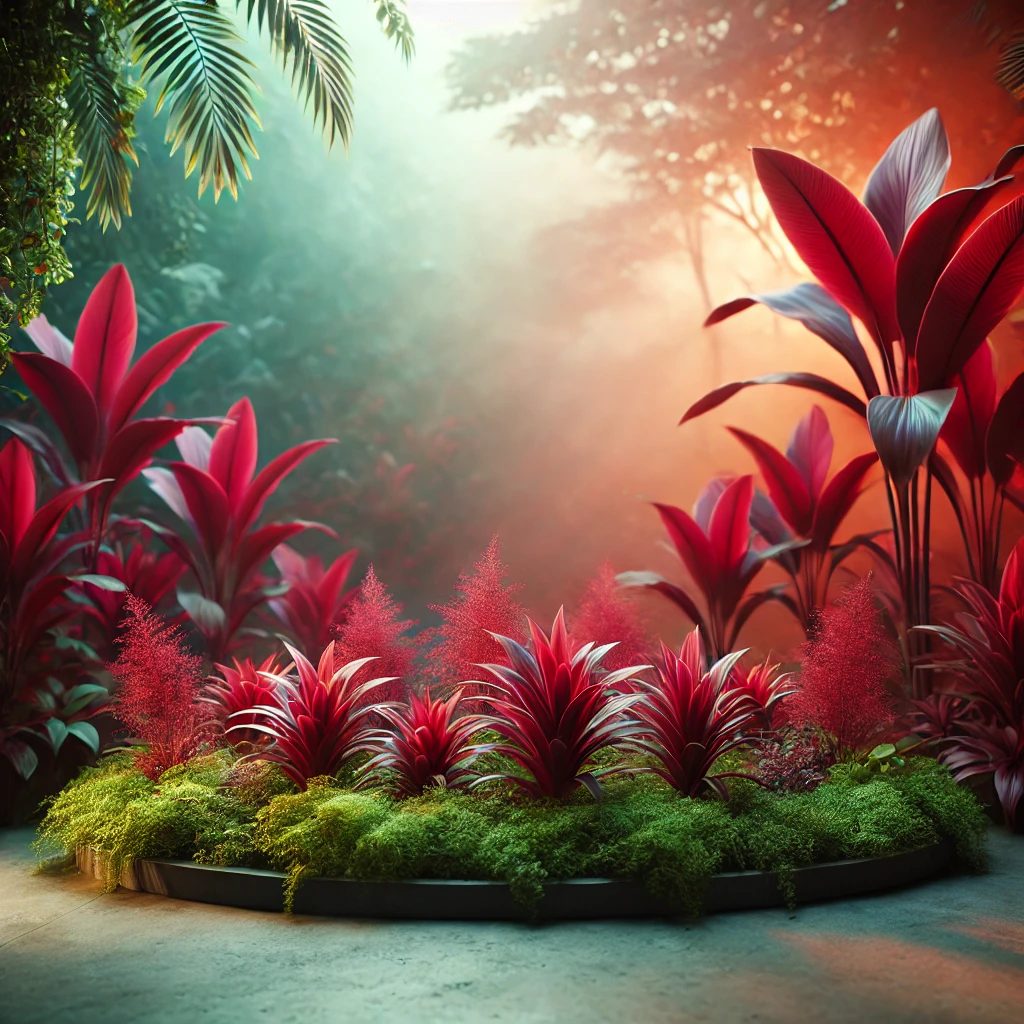
Maintaining the vibrant color of red plants requires attention to details such as light, soil conditions, and nutritional needs. Below are some “secret” methods—or perhaps lesser-known tips—to help you keep your red plants healthy, radiant, and long-lived.
Soil Preparation and pH Levels
The first step to growing any plant successfully is ensuring a healthy soil environment. For many red plants, the right soil pH can make a big difference in color intensity.
- Soil Testing
- Before planting, test your soil’s pH. Most red plants perform well in slightly acidic to neutral soils (pH 6.0 to 7.0).
- If the pH is too high (alkaline), add organic matter such as peat moss or compost to lower it gradually.
- If it’s too low (overly acidic), consider adding lime to bring it closer to neutral.
- Nutrient Balance
- A balanced ratio of nitrogen (N), phosphorus (P), and potassium (K) is essential.
- Excess nitrogen can lead to lush green growth at the expense of blooms or red pigmentation in foliage.
- Aim for a fertilizer formula that supports both leaf coloration and flowering (often labeled with an NPK ratio around 10-10-10 or 5-10-5, depending on the plant’s specific needs).
- Organic Matter
- Incorporate well-rotted compost or aged manure into your planting beds.
- Organic matter improves soil structure, enhances water retention, and provides micronutrients that can intensify coloration.
Light Requirements
Sunlight plays a vital role in how red pigments develop. Different red plants have varying light requirements, so do your research for each species you plan to grow.
- Sun-Loving Red Plants: Species like Salvia and some varieties of Coleus flourish in bright sunlight. Sufficient sun exposure helps maintain their vivid red coloration.
- Shade-Tolerant Red Plants: Certain Heuchera and Begonia cultivars can tolerate or even prefer partial shade. While they still need some light to maintain coloration, direct, harsh sunlight could scorch their leaves.
Watering and Moisture Control
Balancing moisture levels is key. Overly soggy soil can lead to root rot, while parched soil can stress plants and diminish color intensity.
- Regular but Moderate Watering
- Most red-flowering annuals and perennials require consistent moisture to maintain healthy blooms.
- Water deeply once or twice a week (depending on climate), rather than giving frequent shallow sprinklings.
- Mulching
- Organic mulches such as straw, wood chips, or shredded leaves help retain moisture and regulate soil temperature.
- A layer of mulch also suppresses weeds, which can compete with your red plants for nutrients and water.
- Drainage
- Make sure your planting sites have proper drainage to avoid water-logged soil.
- If the soil is heavy clay, consider raised beds or amending the soil with coarse materials like perlite or bark to improve aeration.
Fertilization Strategy
Fertilizing red plants is a balancing act. You want to provide enough nutrients to support vibrant color and abundant blooms, but too much nitrogen can compromise color intensity in foliage or reduce flowering.
- Low-Nitrogen Formulas: If you’re growing red-foliage plants specifically for their leaf coloration, opt for a balanced or low-nitrogen fertilizer. This minimizes excessive green leaf growth and helps maintain the red pigments.
- Flower-Booster Formulas: For red-flowering plants, use a fertilizer higher in phosphorus (the middle number in an NPK ratio). Look for formulations specifically labeled for blooming plants (e.g., 5-10-5 or 10-20-10).
Pest and Disease Control
Healthy plants naturally exhibit more vivid coloration. Keep an eye out for pests and diseases that could stress your plants, resulting in dull leaves or fewer blooms.
- Common Pests: Aphids, spider mites, and whiteflies can pose problems for many ornamental plants. Use insecticidal soaps or organic treatments if infestations appear.
- Preventive Measures: Remove dead or diseased foliage promptly. Space plants appropriately to ensure good air circulation, which helps deter fungal diseases.
- Organic Solutions: Encouraging natural predators like ladybugs or lacewings can reduce pest populations without harming beneficial organisms.
By applying these tips—tailoring your soil, adjusting sunlight and watering, and using the right fertilizers—you’ll be well on your way to cultivating healthy, radiant red plants that make a lasting impression.
Garden Design Ideas Featuring Red Plants
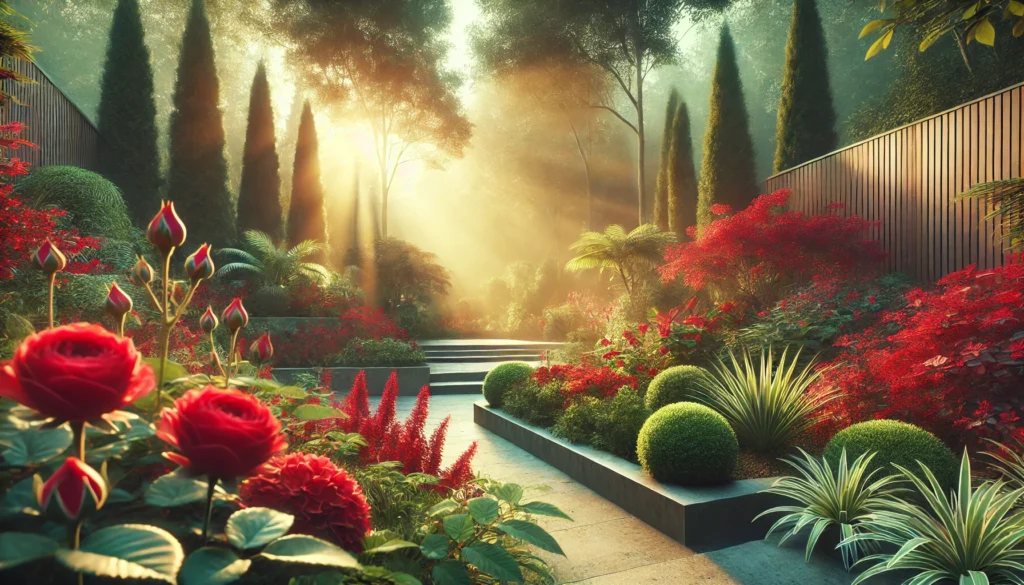
Now that you understand what makes red plants so special and how to care for them, let’s look at some design ideas. Incorporating red plants effectively can transform a standard yard into a distinctive, eye-catching landscape that reflects both your personality and gardening style.
Color-Themed Borders and Beds
One popular design approach is to create color-themed garden beds. By dedicating a specific bed or border to red blooms and foliage, you can build a dramatic visual statement. Here’s how:
- Monochromatic Scheme: Fill an entire bed with different varieties of red plants, such as Coleus, Salvia, and Begonia. Vary the heights, textures, and bloom times to keep the display interesting throughout the growing season.
- Complementary Colors: Pair red plants with shades of green and white to emphasize the red’s vibrancy. Alternatively, combine red with purple or orange plants for a warm, sunset-like palette.
Focal Points and Accent Pieces
Red plants can serve as visual anchors that draw the eye to specific areas of your garden. Use them as focal points in the following ways:
- Entryways and Gateways: Plant bold red flowers near your front entrance or garden gate to create a welcoming, energetic vibe.
- Patio Containers: A container filled with vibrant red Geraniums or Begonias can enliven a patio space, offering a burst of color in an otherwise neutral setting.
- Specimen Trees: Consider adding a Japanese Maple as a striking specimen tree. Its red foliage can stand out against surrounding greenery, providing year-round interest (especially if you choose a cultivar with colorful leaves that last through the autumn).
Companion Planting Strategies
Companion planting not only ensures aesthetic harmony but can also promote healthier growth and pest resistance.
- Texture Variation: Combine delicate red Salvia flowers with large, broad leaves of Hostas or the feathery texture of ornamental grasses. The resulting contrast in shape and size highlights the red blooms beautifully.
- Edible Companions: Some red plants, like ornamental peppers, add both ornamental beauty and culinary value. Plant them near herbs or vegetables that benefit from the pollinators they attract.
- Pest-Deterrent Plants: Include aromatic herbs like basil or rosemary near red-flowering plants to help deter pests naturally.
Seasonal Considerations
To keep your garden vibrant throughout the year, plan for multiple seasons:
- Spring: Early-blooming red tulips and Azaleas can kick off the season with a flourish of red.
- Summer: Mid-summer stalwarts like Red Salvia, Zinnias, and Begonias will maintain interest.
- Autumn: Japanese Maples and some Heuchera varieties can continue showcasing red hues, either in their leaves or late-season blooms.
- Winter: For cold climates, consider red-berried shrubs like Winterberry (Ilex verticillata) to provide a cheerful pop of color against a snowy backdrop.
Edging and Pathways
Red plants can also define the edges of walkways, driveways, or garden paths. Low-growing red Begonias, Heuchera, or ornamental peppers can line these pathways, creating a clear boundary while adding color. This is especially useful in guiding visitors through your garden, encouraging them to explore different sections while appreciating a cohesive, intentional design.
Additional Garden Tips from Gardenloom
For more information about enhancing your garden with red plants, maintaining healthy soil, or elevating your garden’s overall appeal, be sure to check out Gardenloom. At Gardenloom, you’ll find:
- In-depth Guides: Detailed tutorials on plant care, specialized watering techniques, and design inspirations.
- Expert Advice: Articles and resources curated by experienced horticulturists and landscape designers.
- Community Support: Opportunities to engage with fellow gardening enthusiasts, exchange tips, and showcase your achievements.
Remember, continuing to write high-quality content—whether it’s a personal garden blog, a website dedicated to horticulture, or even social media updates about your gardening journey—can significantly boost your online presence and help you connect with like-minded individuals. Websites that prioritize well-researched, informative content are more likely to grow their traffic and build credibility over time.
Conclusion
Incorporating red plants into your garden is a surefire way to create a distinct, visually captivating space. From their unique pigmentation to their ability to attract pollinators, red plants offer both beauty and utility. By carefully selecting varieties that suit your local climate, preparing the right soil conditions, and employing strategic watering and fertilization methods, you can ensure your red plants remain vibrant and healthy for many seasons to come.
Remember the design strategies we discussed—such as color-themed beds, focal points, and companion planting—to make the most of your red plants’ aesthetic potential. Whether you opt for the fiery blooms of Salvia or the lush red foliage of Coleus, the possibilities are endless. Keep in mind the seasonal shifts in color, and maintain a well-rounded garden that delights the senses all year long.
Finally, don’t forget to take advantage of the wealth of resources offered by Gardenloom. With in-depth guides, expert advice, and a community of passionate gardeners, Gardenloom stands ready to support you on your quest to cultivate an extraordinary outdoor haven. By focusing on high-quality content and sharing your gardening journey, you’ll not only enhance your own expertise but also help inspire a wider audience to embrace the world of gardening.
FAQs About Red Plants
1. What makes a plant produce red foliage or blooms?
Red hues in plants often come from pigments like anthocyanins and betacyanins. These pigments can be affected by factors such as light exposure, temperature, soil pH, and overall plant health.
2. Do red-leafed plants require different care than green-leafed plants?
Generally, they have similar care requirements—adequate sunlight (depending on the species), well-draining soil, and proper fertilization. However, some red-leafed plants may be more prone to color fading if they don’t receive enough light.
3. How can I keep the red color vibrant over time?
Maintaining the correct soil pH, providing ample sunlight, avoiding excessive nitrogen, and ensuring consistent watering can all help preserve color intensity. Overly shady conditions or nutrient imbalances can lead to dull or greenish foliage.
4. What types of red plants do well in containers?
Coleus, Begonias, and red Geraniums are excellent choices for container gardening. Just make sure your chosen plant has enough room for roots to grow and that you monitor watering more closely than you would in a garden bed.
5. Can I grow red plants indoors?
Many red plants can thrive indoors, such as Anthurium and certain Coleus varieties, provided they receive bright, indirect light and proper humidity. Keep them away from drafts and monitor watering to avoid root rot.
6. Do red-flowering plants attract pollinators?
Yes! Hummingbirds, butterflies, and bees are often drawn to bright, showy flowers. Red Salvia, Cardinal Flower, and certain red Hibiscus varieties are especially popular with hummingbirds.
7. Why do some red plants appear more purple or maroon?
Subtle changes in temperature, soil acidity, and even sunlight levels can influence pigment expression. Genetics also plays a role: some red-leafed plants naturally lean toward deeper, purple-tinged hues.
8. Which red plants are the easiest for beginners to grow?
Begonias and Coleus are both beginner-friendly options that adapt well to a range of conditions. Salvia and red Geraniums are also relatively easy to grow outdoors, given proper sunlight and watering.
9. How do I prevent pests and diseases on red plants?
Regularly inspect leaves and stems for signs of infestation or fungal issues. Practicing good garden hygiene—removing dead foliage, spacing plants appropriately for airflow, and using organic pest controls—goes a long way in maintaining plant health.
10. Where can I find more detailed guides on growing and caring for red plants?
Check out the resources at Gardenloom. You’ll find in-depth articles, design ideas, and a community of fellow gardeners who can offer tips and support.

